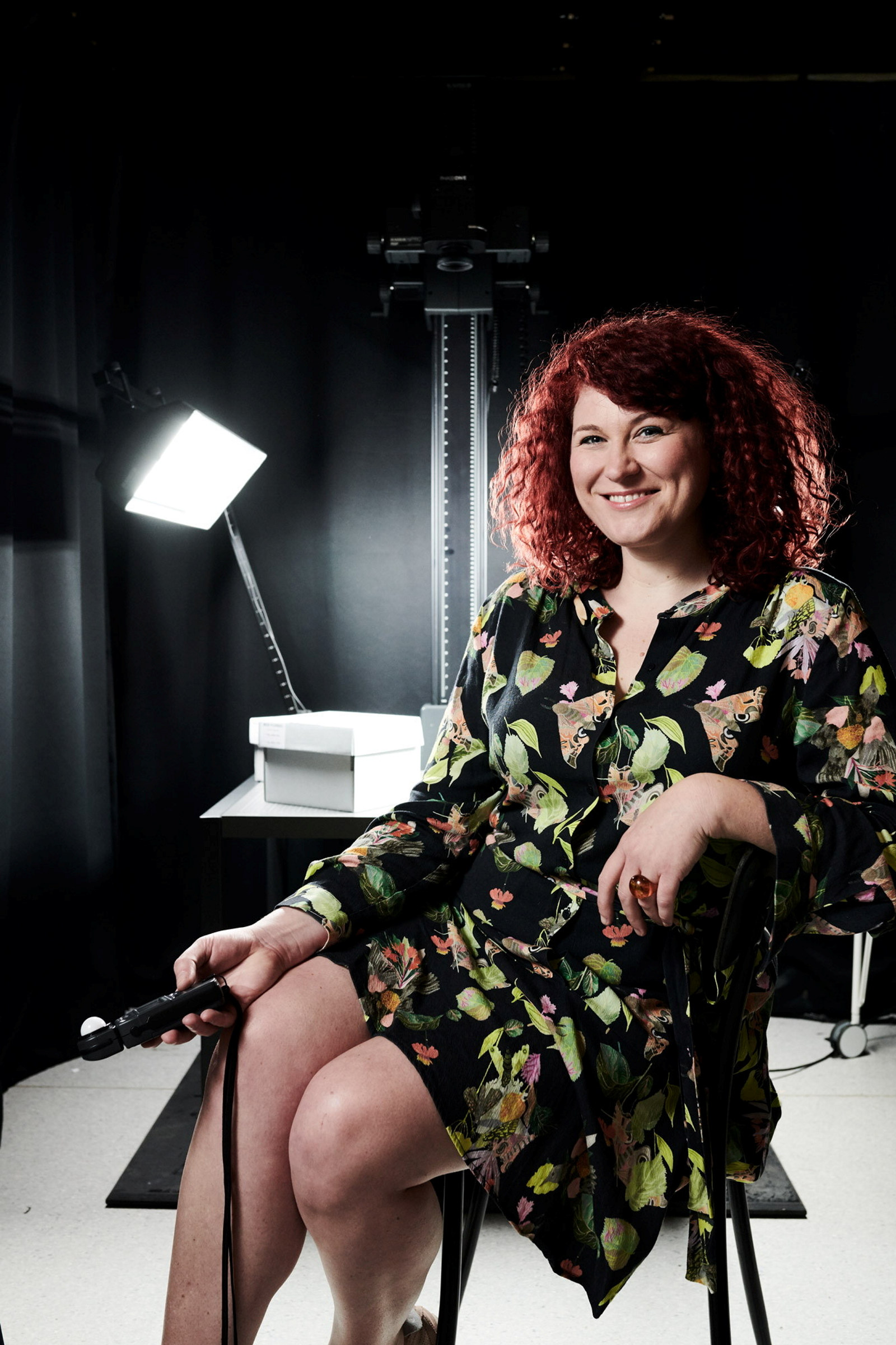Projected across time
In the late 1960s, John Terry, then a young man living at Rouse Hill Estate, composed avant-garde music which he set to abstract projected images, and performed at various locations in Sydney. His work was inspired in part by his childhood fascination with an 1860s magic lantern and magic lantern slides that remained in the family home.
John’s revival of the 1860s magic lantern 100 years later later – as explained in the video below – illuminates the ways in which the objects at Rouse Hill Estate could be re-used and reinterpreted by later generations who lived in the house; this in turn informs how Museums of History NSW presents these objects to visitors. The opportunity to examine the magic lantern within the domestic setting it has occupied for 150 years also makes Rouse Hill Estate an important site for understanding the use of this early projection technology in Australia.
Watch the video
The magic lantern
Today, the lantern, housed in its timber case, sits inside the back door of Rouse Hill Estate. A technological marvel in its time, it was evidently well loved by generations of family members, including John. Manufactured in London, the Newton & Co magic lantern, along with a variety of glass slides, was brought to colonial Australia in the 1860s. The lantern has a tall chimney and body made of black japanned tin, fitted with lamp, reflector, brass focusing tube and lens. Powdered camphor dissolved in sperm whale oil was lit inside the lantern, producing a white light to project glass slides placed in the lantern’s carrier.
Newton & Co also produced all the magic lantern slides in the collection. The intact slides contain one or more glass panels in a timber frame that could be ‘animated’ by an operator and accompanied by music, or a spoken dramatic or comic performance. The Rouse Hill Estate collection includes narrative story sets ‘Tiger in the tub’ and ‘John Gilpin’s ride’ and the cautionary tale ‘Pussy’s road to ruin’; two mechanical slides; nine comic sliders; and four slides depicting fictional or geographic locations. All of the illustrations are vividly hand-coloured with tints and layers of paint and varnish. Fragments of broken glass and timber splinters bear mute witness to the lantern’s use by successive generations of the Rouse and Terry families over 100 years. We have also found evidence of the lantern’s use in a public performance at the Rouse Hill church school on 26 January 1866 – suggesting the object was of community as well as family interest.
A young composer
John Buchanan Rouse Terry was born in 1944, a sixth-generation member of the Rouse family, and lived some of his childhood in the cottage on the Rouse Hill Estate. His grandparents lived in the main residence, Rouse Hill House, and when John visited them he walked through rooms furnished with possessions accumulated by generations of his family. Young John was particularly captivated by the magic lantern. He gave performances for friends and family using the accompanying illustrated coloured slides, but replaced the original light source with an electric light bulb. In the mid-1960s, John moved back to Rouse Hill Estate to spend time with his ageing grandmother and to support other family members living at the property. A musician and aspiring composer, he began developing psychedelic music recitals in the family home.
Handmade objects that remain in the Rouse Hill Estate collection are evidence of John’s engagement with projection technology as a mode of performance. Cardboard 35mm slide mounts were used to frame colourful layers of paint, plastic, paper, glue and string, sandwiched together and sealed. Two reels of 16mm film were coloured and hand-painted with blocks and strokes to create abstract moving images. The 1960s slide and film projectors were a direct descendant of the antique magic lantern technology, and became a popular form of image projection and storytelling in the 20th century. But instead of projecting 35 mm Kodak Ektachrome slide transparencies from his travels to bore the neighbours, John used slide-mounted collage to transport the audience into a psychedelic world.
Reviving the 1960s – and the 1860s
John transported an audience again, for one night only, in 1998, not long after the house had opened as a museum. On Friday 17 April, Dr John Terry – he received a Doctorate in Creative Arts from the University of Wollongong in 1989 – re-created the performances he had first staged in the 1960s, presenting his psychedelic sounds and images in the arcade. Footage of the event shows the antique magic lantern clearly visible at centre stage, the cord of what might be an electric bulb trailing out the rear. It is notable that the 1860s magic lantern and slides are used prominently in a performance 130 years after it arrived on site. Perhaps even more remarkable is the performative context, with the lantern placed alongside the mid-20th-century projection technology that descended from the lantern technology.
A vide recording of the event has been a vital source of lost or otherwise unsubstantiated information about the magic lantern at Rouse Hill Estate and the multimedia performances staged in John Terry’s early career as a musician and composer. It also highlights the role that the magic lantern collection played in inspiring the creative expression of a young Rouse descendant during the mid-20th century.
An enduring collection
Increasingly, our storytelling at MHNSW is being enriched by a renewed focus on the material culture of the collections in our places; however, it remains the case that the museum context can render objects like the magic lantern inert and unperformed. To address this, MHNSW has used digital technology to photograph and animate the glass slides, and set them to a soundtrack. This has allowed us to present the wonder of the magic lantern show to museum audiences today. The digital projections have proved a popular aspect of public events at the property. Visitors, especially young children, find the 1860s slides hilarious, and watch the projections over and over again – perhaps in much the same way as Rouse and Terry family members enjoyed the magic lantern projections from the 1860s, and into the 1960s.
John Terry’s story, closely knitted with the history of Rouse Hill Estate, is a case study in the use of domestic objects at the house across generations. The objects still in situ at Rouse Hill Estate illuminate histories of performance, images, image making and related technology. While it is unlikely that the original objects will ever be performed at Rouse Hill Estate again, the collection in its digital form can extend the legacy of these museum objects on the site where they have been presented for 150 years.
Magic lantern
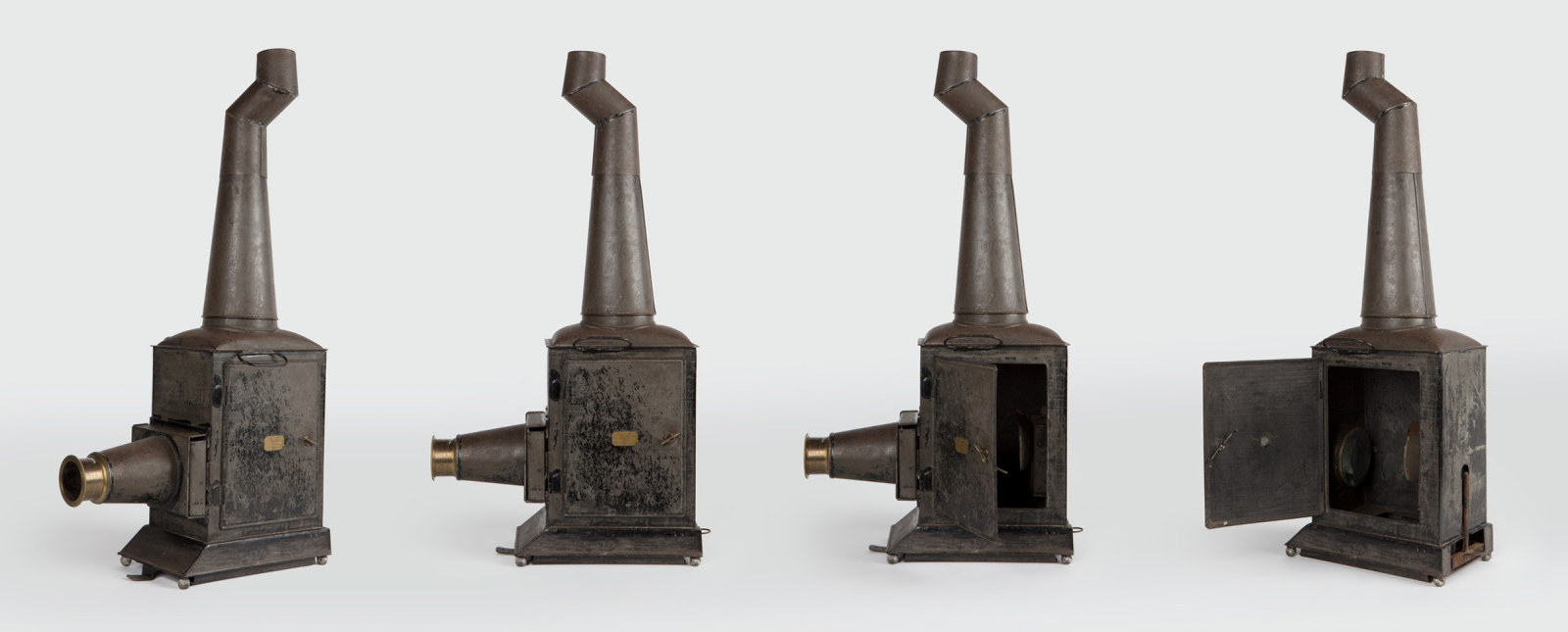
Magic lantern at Rouse Hill Estate
The Rouse Hill House magic lantern is a mid-19th century example of a form of image projector which dates back to the 17th century
Published on
Related
Browse all
Magic lantern at Rouse Hill Estate
The Rouse Hill House magic lantern is a mid-19th century example of a form of image projector which dates back to the 17th century
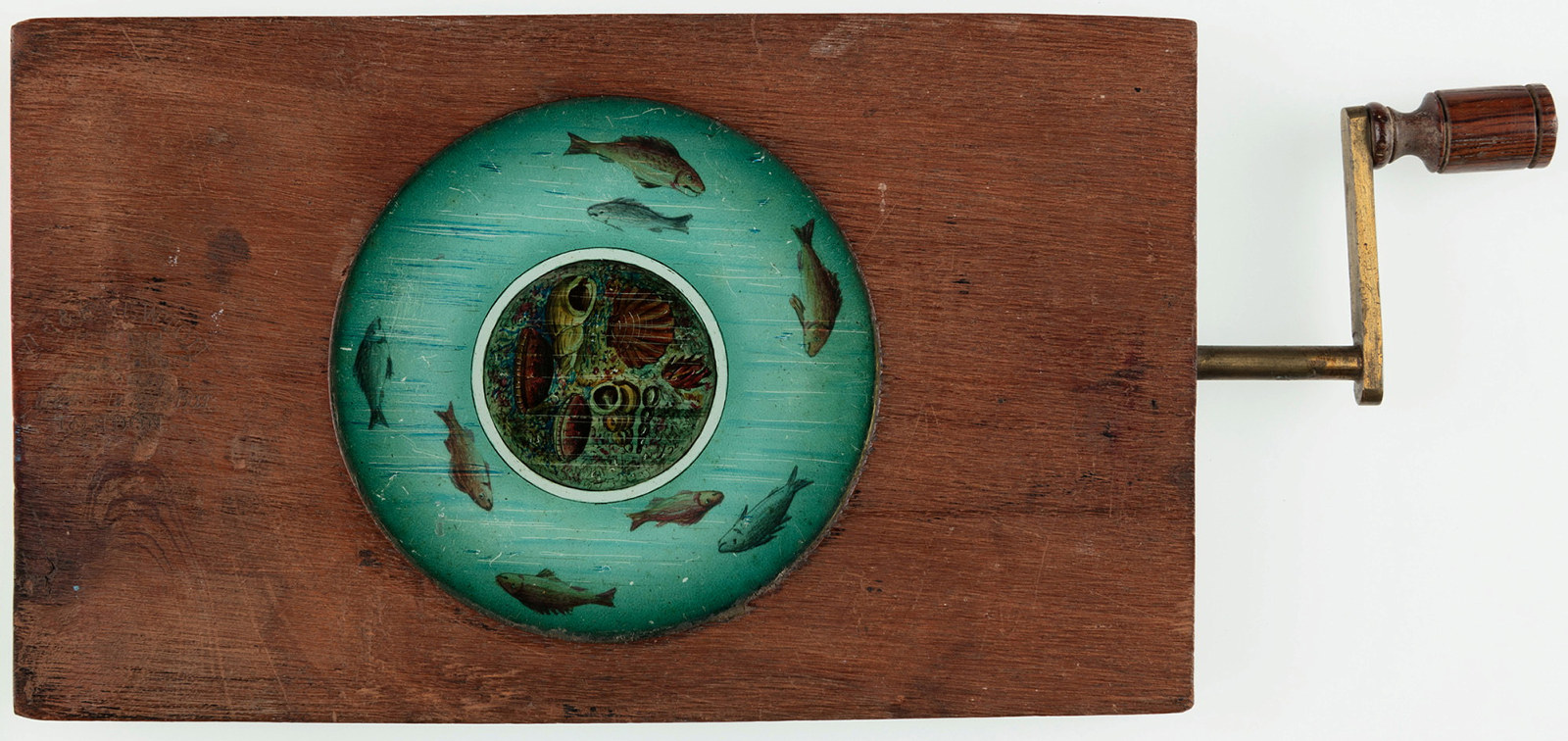
Animated comic sliders for magic lantern
The magic lantern was a popular entertainment technology in the 19th century used to project stories and comic scenes.
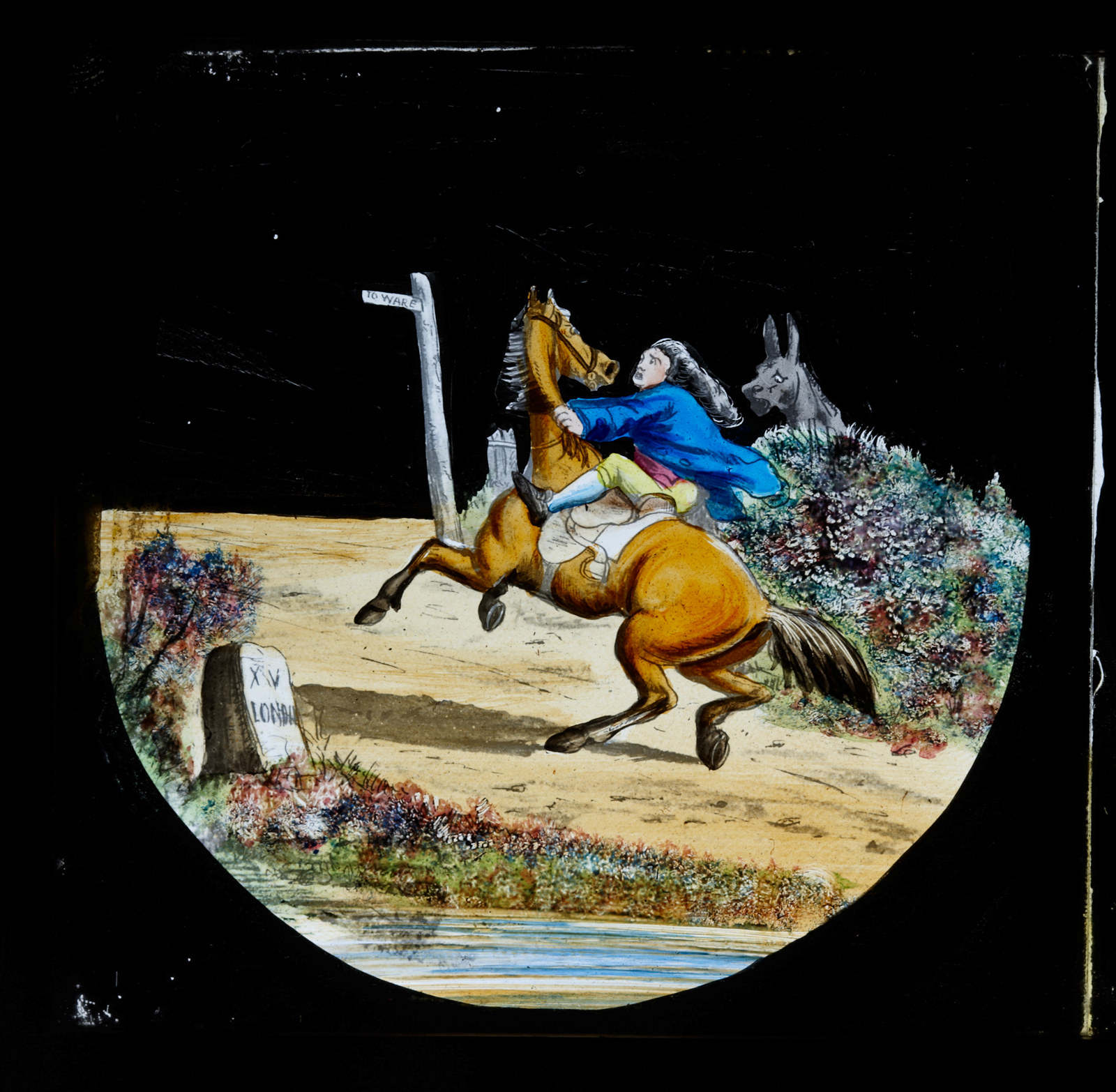
John Gilpin’s Ride
The fictional story of John Gilpin and his misadventures on a runaway horse was originally written as a comic ballad by English poet William Cowper in 1782
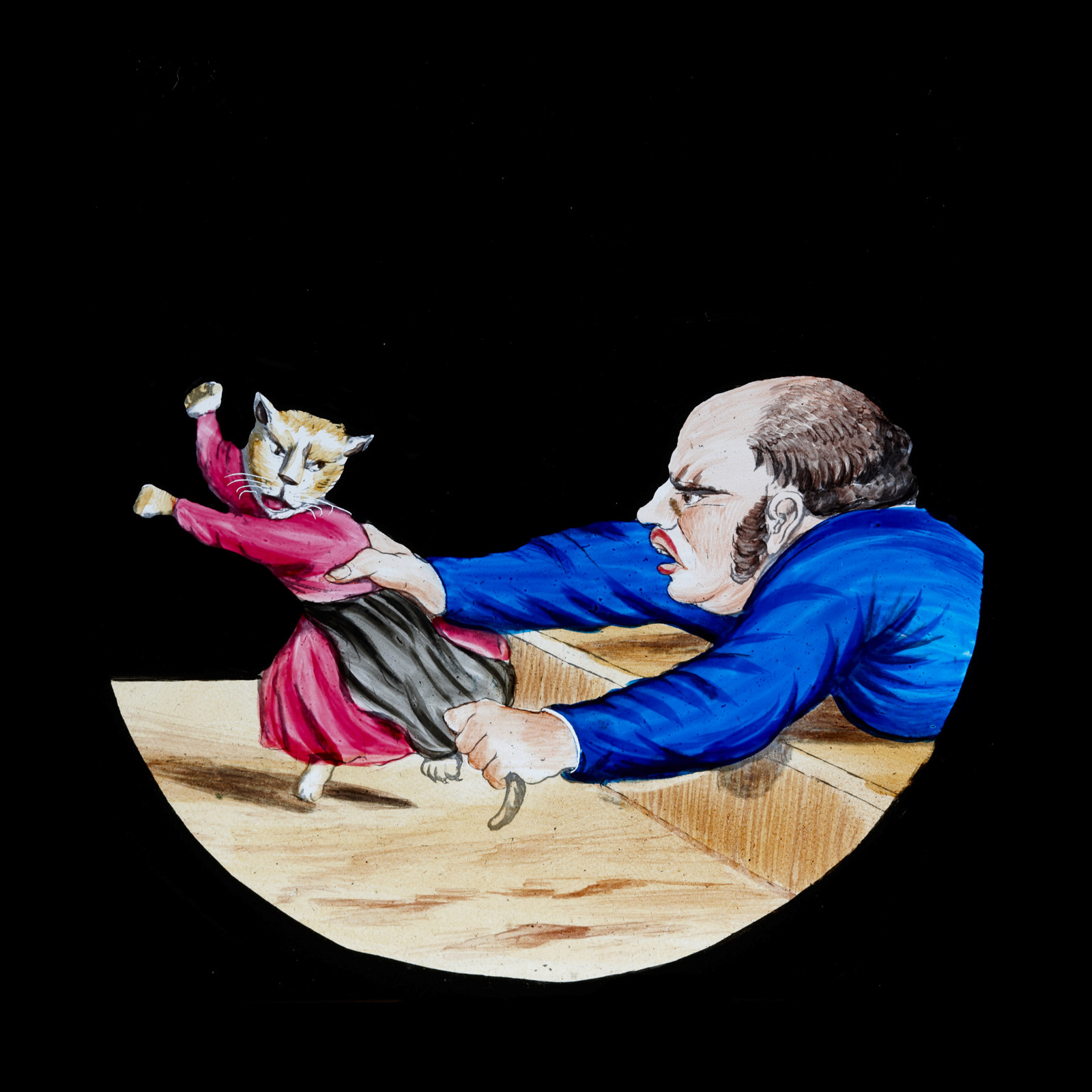
Pussy’s road to ruin
‘Pussy’s Road to Ruin’ is not a comic story but a cautionary moral tale for children
